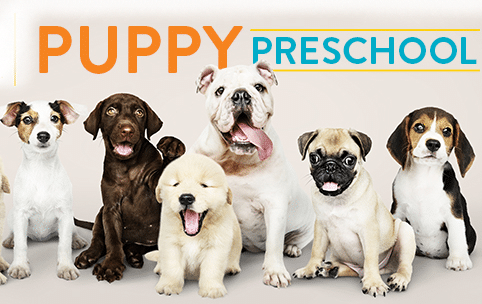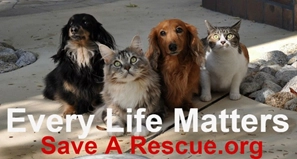Getting off to the right start is very important between you, other family members and your new additional, fabulous puppy. and minimizing bad behavior and knowing how to lay a good foundation of great behavior is vitally important. You will unknowingly send verbal and non-verbal language to you puppy that lay will ‘seed’ both good and bad habits. …so it’s important to equip yourself with the proper skills so that you can train your puppy and establish a lifelong bond with your new best friend.
Here are some top tips from the experts that will help you.
DO’s
Bev Gun-Munro November 2021
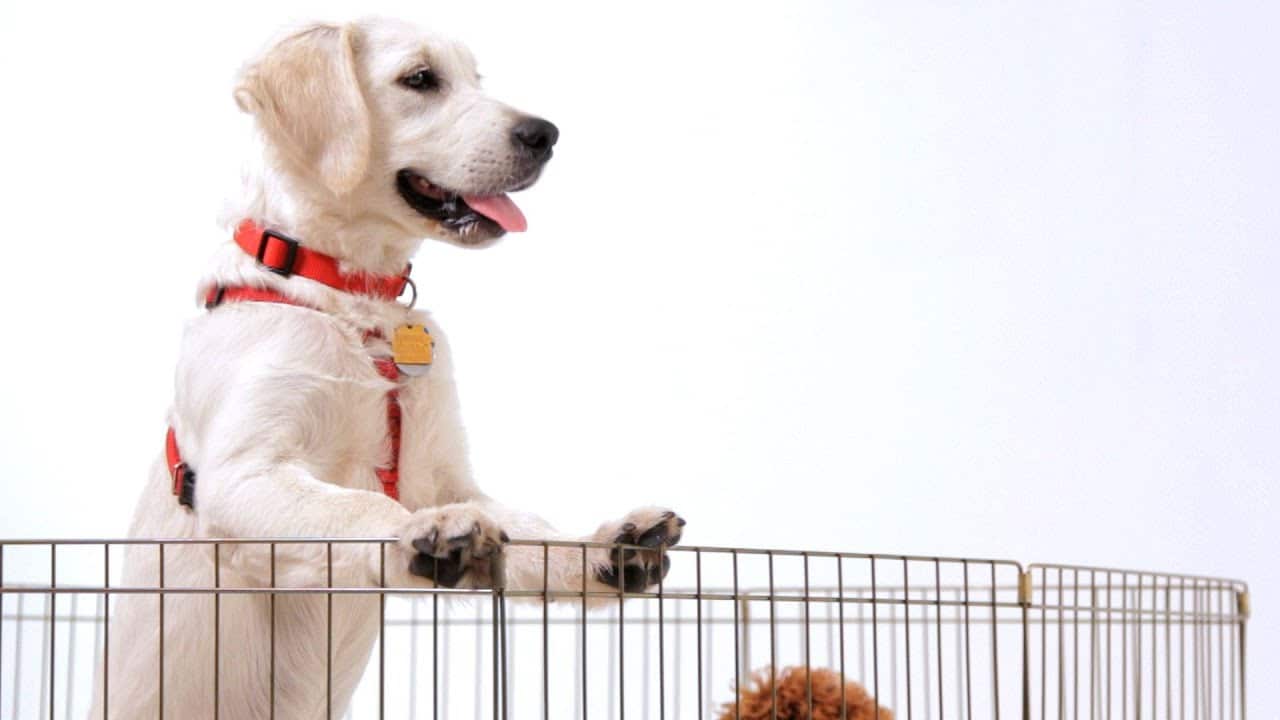
Create a ‘safe, small space,’ maybe with a room divider or exercise pen and allow your puppy to feel comfortable and safe in a small space.
DO: Start Training ASAP: Enroll In A Puppy Training Class!
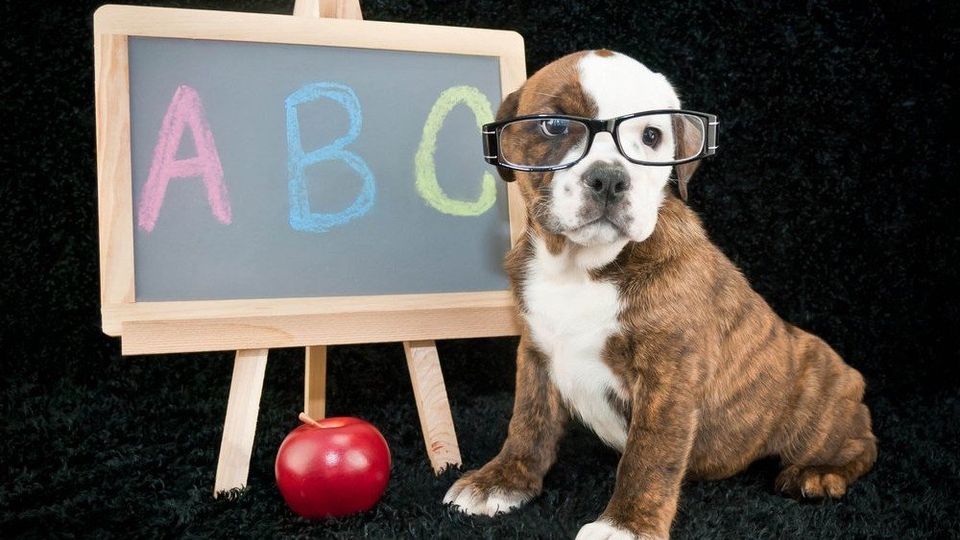
While there are many resources on the Internet that provide advice on how to train your puppy we here at SaveARescue.org recommend enrolling your pup in a puppy training class at your earliest convenience. Discuss age-appropriate classes and dates with the folks running the puppy training classes in your community.
Here you will learn solid basic commands, which will be invaluable to you, and the professionals can point out unintentional commands you might be giving that are counter-productive with the outcomes you are looking for.
Puppy classes are great socialization opportunities that provide fun mental and physical simulation.” It’s also a great way for everyone in the family to bond and get on the same page when it comes to puppy training.
Working with a professional is important in the lifelong happiness of your puppy. Professional trainers can pinpoint concerns, adjust management techniques early on before the bad behavior becomes a habit, and set you and your pup up for success.
DO: PACE YOUR PUP (& YOURSELF) WITH TRAINING
Keep training sessions short ~ so your puppy doesn’t end up bored and frustrated, as they will learn to not be responsive if they start tuning out commands.
Start with short, frequent sessions of 5-10 minutes each, and remember that training does not always have to occur during scheduled sessions.
You have the chance to create a training session every time there is an opportunity, for example if you have something in your hand that your dog wants or if they jump on the couch when they’re not supposed to.
Integrate it into your life so your dog understands that training can happen all day long, not just when you have a treat pouch in your hand!
Always end training on a positive note with a command they are great at instead of a failed command. Verbal “Thank You’s” & doggie treats are a good thing!
DO: MENTAL STIMULATION is as important as PHYSICAL EXERCISE
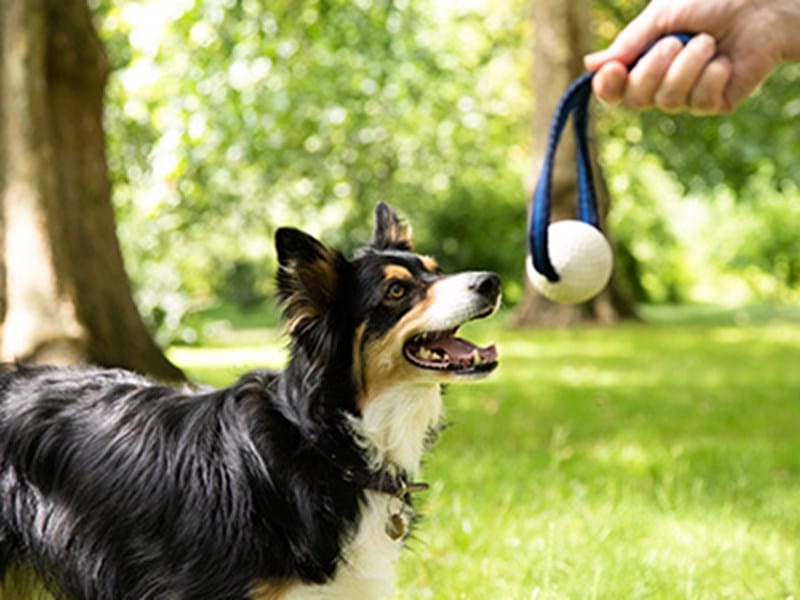
As the old adage goes, “a tired dog is a good dog”… but is that always the case?
Mental stimulation is essential in raising a puppy. For example, playing fetch is a good combination of both mental and physical exercise as you are giving your pup a task as they run back and forth.
Manufactured dog toys that can hide kibble, treats, and squeaky toys also provide mental stimulation by exposing your young puppy to lots of different textures, smells, and sounds.
DO: USE A CLICKER AS A TRAINING TOOL
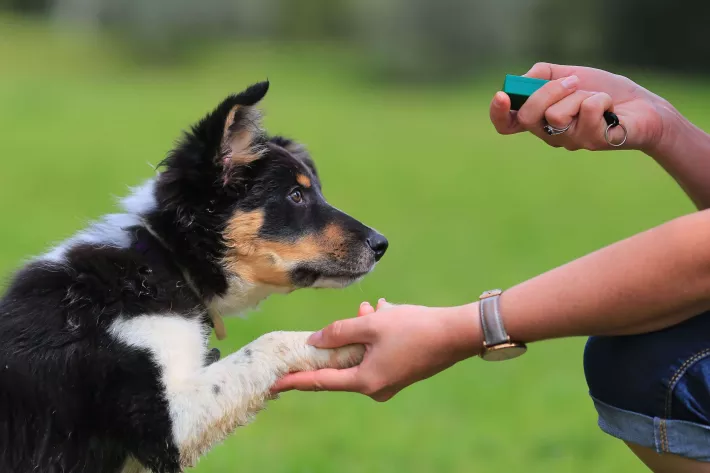
Clicker training involves a training device that makes a “click” when you push a button and is a helpful tool in teaching your puppy new commands. Classical conditioning in puppy’s forms associations between the clicker and the reward, and behaviors that result in the reward are more likely to be repeated. The clicker is a good marker for consistency and sends a clear signal to your puppy that any time they hear the “click,” they know they did something right and a reward is coming. It’s important to keep in mind that you should not click to get your puppy’s attention or to reprimand them; it’ll confuse signals and make training even more difficult.
DO: SOCIALIZE YOUR PUPPY AS SOON AS POSSIBLE
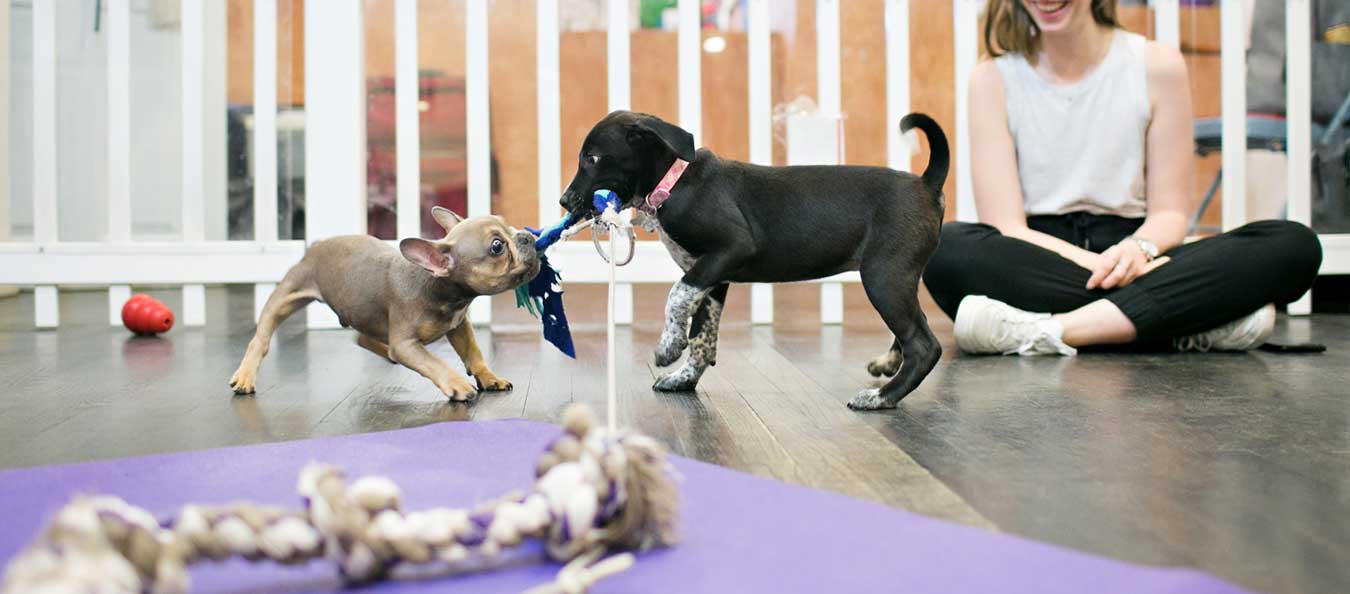
Socializing your puppy at a young age will help it grow up to be a confident, happy, and friendly dog.
Socialization refers to more than just meeting other puppies – it is the process of introducing your puppy to new stimuli and forming positive associations with new things, people, and places.
According to Dr. Jamie Richardson, USDA Accredited BVet Med and Medical Chief of Staff at Small Door Veterinary, puppies have a 4-month socialization and training window during their development where they are super receptive to their environment and haven’t learned a fear response. This means they are curious, willing to investigate their surroundings, and able to form attachments to humans and other dogs.
DO: FIND THE REWARD THAT’S APPEARS MOST VALUABLE FOR YOUR DOG [ Treats, Your Voice, A Favorite Toy]
Figure out which toy your puppy seems to like a lot ~ something that is a ‘positive reinforcement’ for them.
Sometimes, the most valuable reward for them might not necessarily be dog treats; less food-motivated pups will prefer praise, head pats/chest scratches, or even just your love and attention.
Discover their favorite treat, create a ‘treat tournament’… by placing the 2-5 different treats you’ve invest on a flat tray on the floor ~ and watch which one they go for 1st. Their noses are 30,000 [Chihuahua] to 3,000,000 [Bloodhound] stronger than our sense of smell. They’ll tell you which one they favor first. Voila!
Note: While you might be tempted to spoil your puppy, remember that you should never overfeed your dog with treats!
DO: CRATE TRAIN
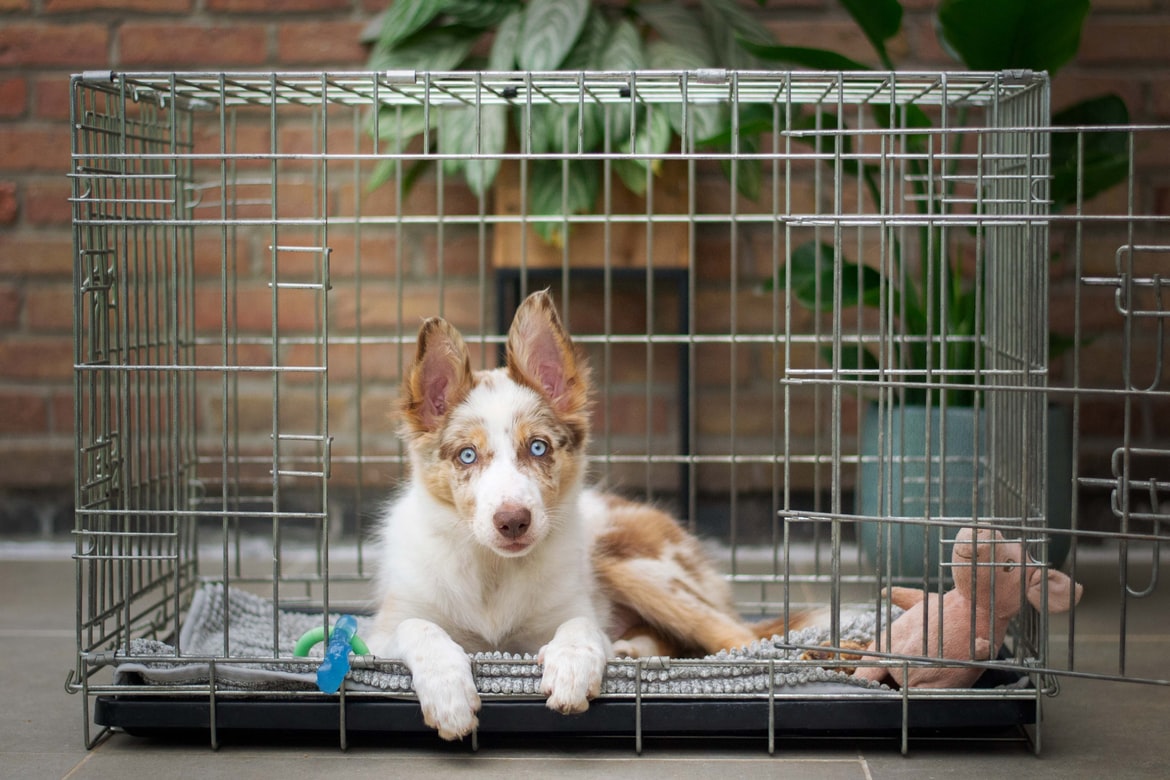
While you might feel guilty for keeping your puppy in a dog crate, veterinarians and dog training experts actually recommend crate training young puppies and cite many benefits.
Dogs have a natural ‘Den’ instinct to seek out protective shelters, so a crate provides them a safe space to retreat to, which protects them naturally on all sides when you can’t be watching them.
Start them off by leaving the crate door open and tossing in a treat so they willing go in to ‘fetch’ and can come out. Do this several times, then short periods where you shut them in, but stay near, and open and release them without saying anything, and walk away letting them know that they have their freedom too.
“Crate time” can help prevent your puppy from destroying furniture, chewing on chords, and accidentally ingesting harmful objects that may require medical intervention.” HOWEVER:
DON’Ts
DON’T: NEVER USE THE CRATE AS PUNISHMENT!
Never punish your puppy by isolating them in a crate. You are laying a foundation for them to fear being crated. Bad!
You want your puppy to associate their crate as their own ‘happy place,’ to rest, sleep and feel safe. Using a crate as punishment will erase all of the hard work you put in crate training.
For example, if you punish your puppy for peeing inside the house, there’s a chance that they might become fearful of going to the bathroom in front of you, whether inside or outside.
It’s also one of the main reasons puppies eat their own poop, as puppies who are repeatedly punished by their owners for pooping in the house may be motivated to eat the evidence of their accident.”
DON’T: …. LEAVE YOUR PUPPY ALONE ~ AWAY FROM YOU DAY OR NIGHT!
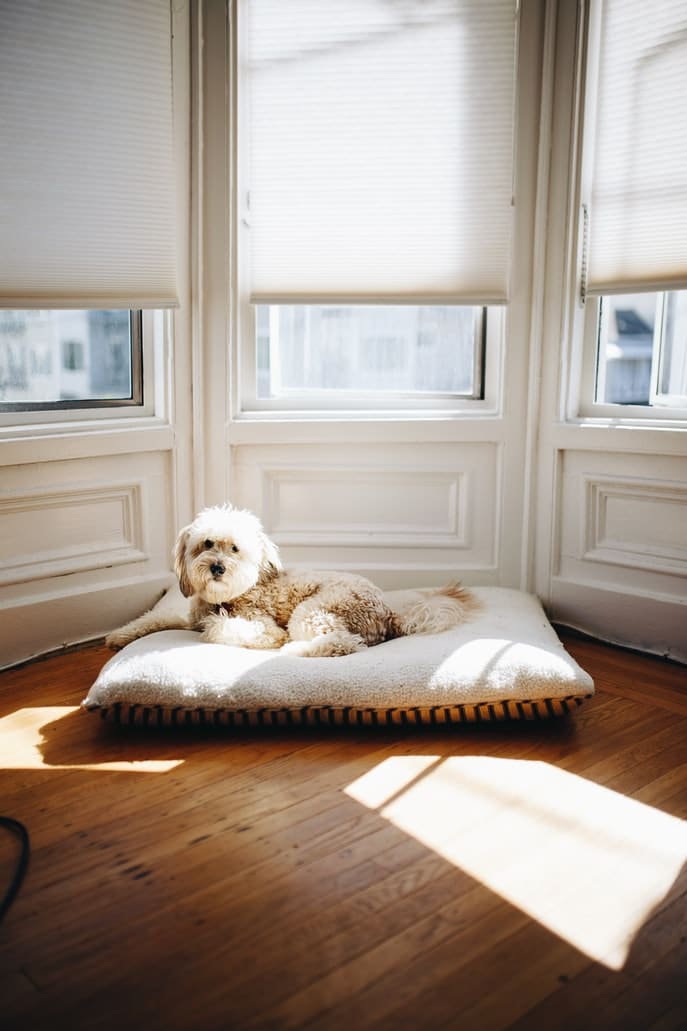
i.e. Consider keeping them in sight in a crate in your bedroom at night, never alone in another room!
Set them up so they can ‘see’ and ‘feel’ your presence ~ establishing a safe feeling that they are part of your ‘pack’ and you are nearby to comfort and make them feel loved and safe.
Puppies can start learning much earlier than you might expect. The critical learning period and socialization starts at 3 weeks, and a puppies can learn bathroom elimination areas and things like the ‘sit’ command pretty much right away.
Teach good manners and set boundaries and be consistent with what they are allowed and not allowed to do, i.e. allowed on your sofa, bed or not?
DON’T: RAISE YOUR VOICE OR YELL AT Them ~ ever!!!!
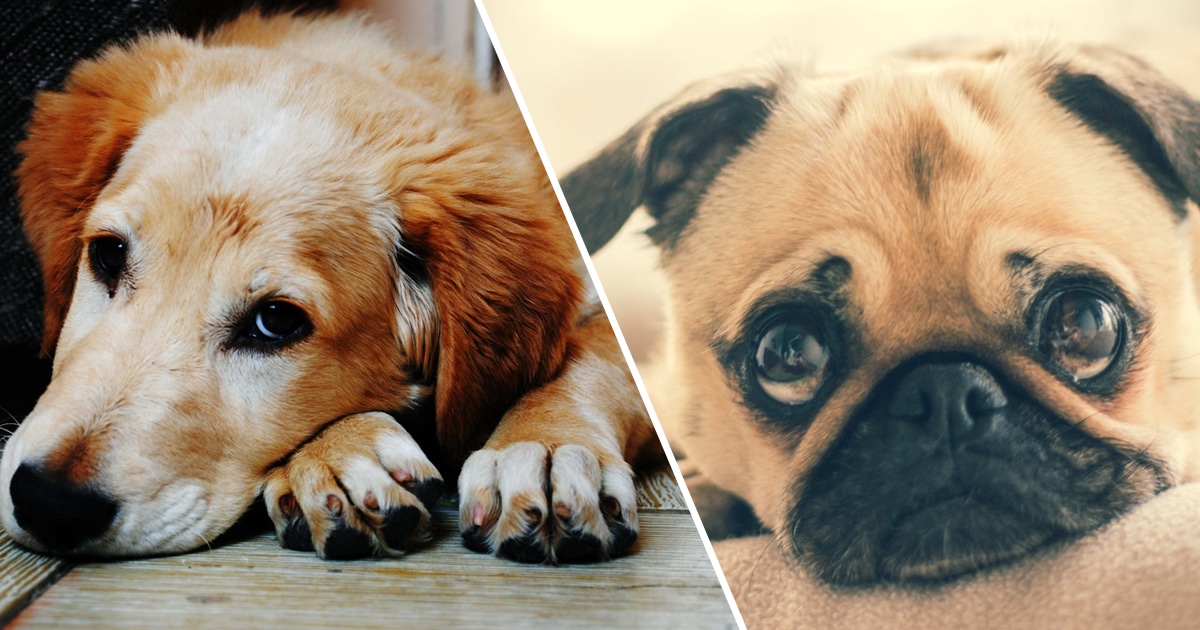
It is essential that you keep your cool even during the most difficult moments. Your body language and tonality speaks volumes to a puppy/dog.
For example…when you raise your voice, they sense an increase in energy and excitement ~ but they might not understand that you’re angry or upset and can get even more excited or jump ~ which is counterproductive.
**Remember, your dog’s behavior is a reflection of you as the owner and trainer and not the behavior of your pup.
It’s your fault, not your puppy’s/dog’s fault for any/all behavioral characteristics learned, except genetic dispositions of course.
DON’T: PLAY “HAND GAMES” or LET THEM CHEW YOUR FINGERS ~ EVER!
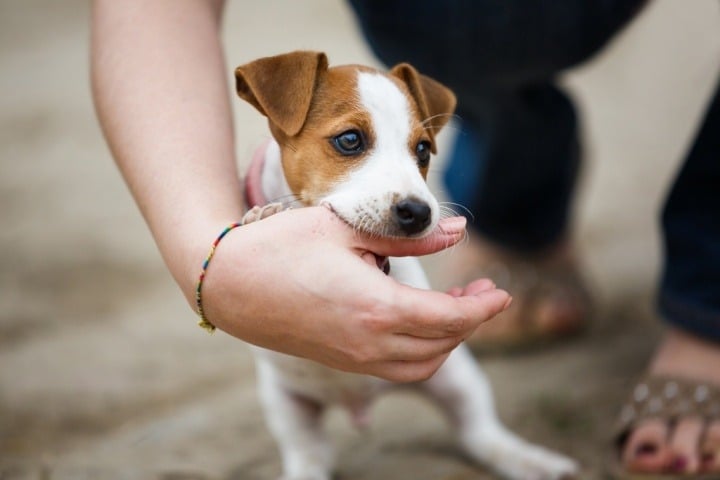
Hand games include waving your fingers in front of your puppy’s face or gentle wrestling.
Don’t let your puppy associate your fingers, hands, toes, etc. with a chew toy!
If they are nipping at you, remove yourself from the situation and provide them with appropriate chew toys to distract them from biting your hands
Teach them that it’s ok to chew on toys, not you.
Puppies usually bite because they are teething [between 5-7 months of age]…or because they are curious and that’s how they explore their new world.
The puppy biting phase does pass and being mindful of not playing hand games can make this transition quick and painless.
DON’T: OVERWHELM YOUR PUPPY OR FORCE THEM TO TRY NEW THINGS THAT THEY’RE NOT READY FOR
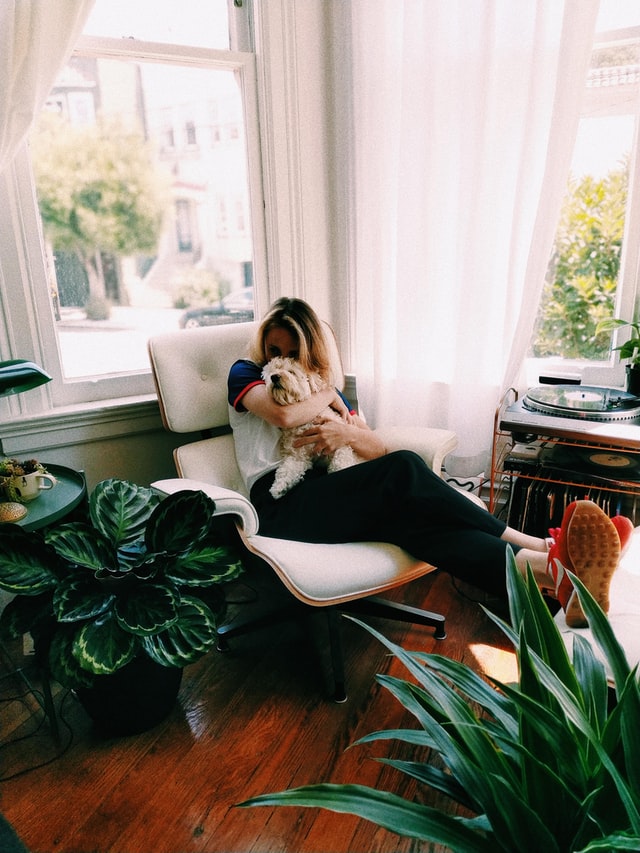
Over-stimulation can lead to fear and a negative association called “flooding.”
Your puppy/dog, just like us, won’t like every puppy/dog they meet.
Use YouTube videos to your advantage. Search on YouTube for different sounds and test your puppy. For example thunderstorms, fireworks, and city sounds such as car horns, traffic, and train tracks if you live in an urban environment.
*Start at a low volume, play it for a couple of seconds, and follow up with a yummy treat. If your puppy is doing well, increase duration and volume over the next couple of days.”
There are many socialization checklists available for reference that can provide great guidance as you socialize your puppy.



